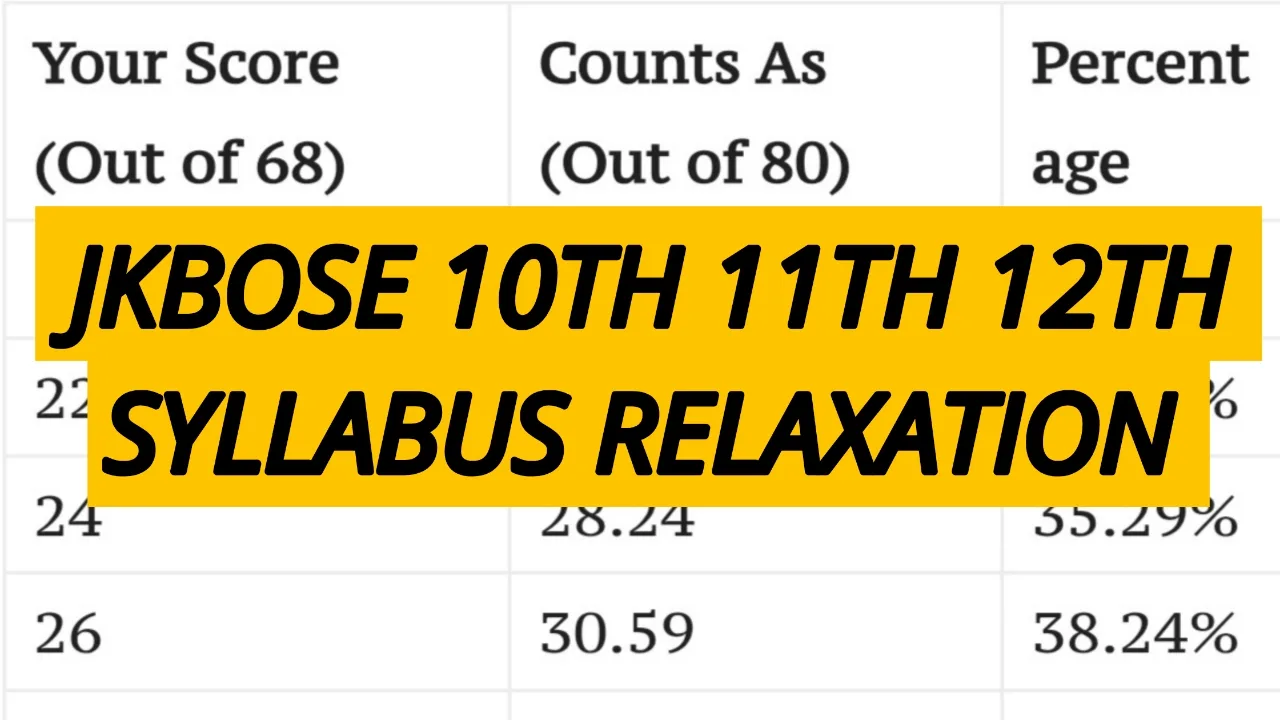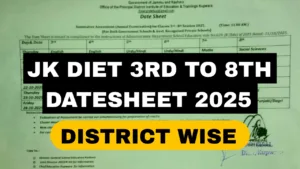The Jammu and Kashmir Board of School Education (JKBOSE) has announced a significant 15% relaxation in the syllabus for students appearing in the Class 10th, 11th, and 12th examinations for the 2025 session. This move, coupled with the implementation of an ‘Open Choice System,’ aims to provide relief to students and ensure a stress-free examination environment. This detailed guide explains exactly what the 15% syllabus relaxation means and how the marks will be calculated under the new ‘Open Choice System.’
15% Syllabus Relaxation and Open Choice System
The JKBOSE notification clearly states that candidates are not required to attempt the entire question paper. Instead, the relaxation works on the principle of reducing the attemptable marks by 15%, while calculating the final score out of the full paper marks.
Key Pointers:
- Attempt 85% of Marks: Students are only required to attempt questions totaling 85% of the maximum theoretical marks for that subject.
- Open Choice: Students can choose any questions they prefer to meet this 85% target. For instance, if a question paper contains 100 marks worth of questions, the student can pick and choose any combination of questions that add up to 85 marks. This gives a huge advantage, allowing students to skip entire units they find challenging.
- Pro-Rata Marking: The marks obtained by the student out of the 85% attempt will be proportionately scaled up to represent 100% of the maximum marks. This ensures that a student who perfectly attempts 85% of the paper will still score the full 100% marks.
How Marks Will Be Calculated (The Scaling Mechanism)
To understand the full benefit, it is crucial to know how the final score is derived. The student’s raw score is effectively converted into a final grade using the following formula:
Final Marks=Marks Scored/Maximum Marks to be Attempted (85%)×Maximum Total Marks
This ensures that the final result reflects the student’s mastery over the attempted portion of the syllabus without penalizing them for the 15% they chose to skip.
JKBOSE Syllabus Relaxation and Marking
The table below provides clear examples for common maximum marks in theoretical papers (e.g., 80 marks for subjects like Science/Maths or 70 marks for certain electives).
| Maximum Total Marks (A) | 15% Relaxation (0.15 * A) | Marks to be Attempted (85% of A) (B) | Example Raw Score (C) | Final Calculated Marks | Final Marks (Out of A) |
|---|---|---|---|---|---|
| 80 | 12 | 68 | 60 out of 68 | 6860×80 | 70.58 (Rounds to 71) |
| 70 | 10.5 | 59.5 | 55 out of 59.5 | 59.555×70 | 64.54 (Rounds to 65) |
| 60 | 9 | 51 | 45 out of 51 | 5145×60 | 52.94 (Rounds to 53) |
| 100 | 15 | 85 | 78 out of 85 | 8578×100 | 91.76 (Rounds to 92) |
Note on Rounding: The final calculated marks are typically rounded off to the nearest whole number in the result declaration.
Strategic Implications for Students
The introduction of the Open Choice System is a game-changer for student preparation:
- Focus on Strength: Students can strategically decide to master 85% of the syllabus and ignore the remaining 15%. This allows them to allocate more time to their stronger, high-scoring areas.
- Reduced Pressure: By knowing they only need to focus on a smaller, specific portion of the curriculum, the overall stress and burden of memorizing vast amounts of material are significantly reduced.
- High Scoring Potential: Since the final score is scaled to 100%, achieving a perfect 100% score remains entirely possible by simply answering the chosen 85% of the paper correctly.
This thoughtful decision by JKBOSE demonstrates a commitment to student welfare and adaptability in educational delivery. Students of Classes 10th, 11th, and 12th should use this relaxation to streamline their study plans and maximize their efficiency for the upcoming 2025 examinations.


